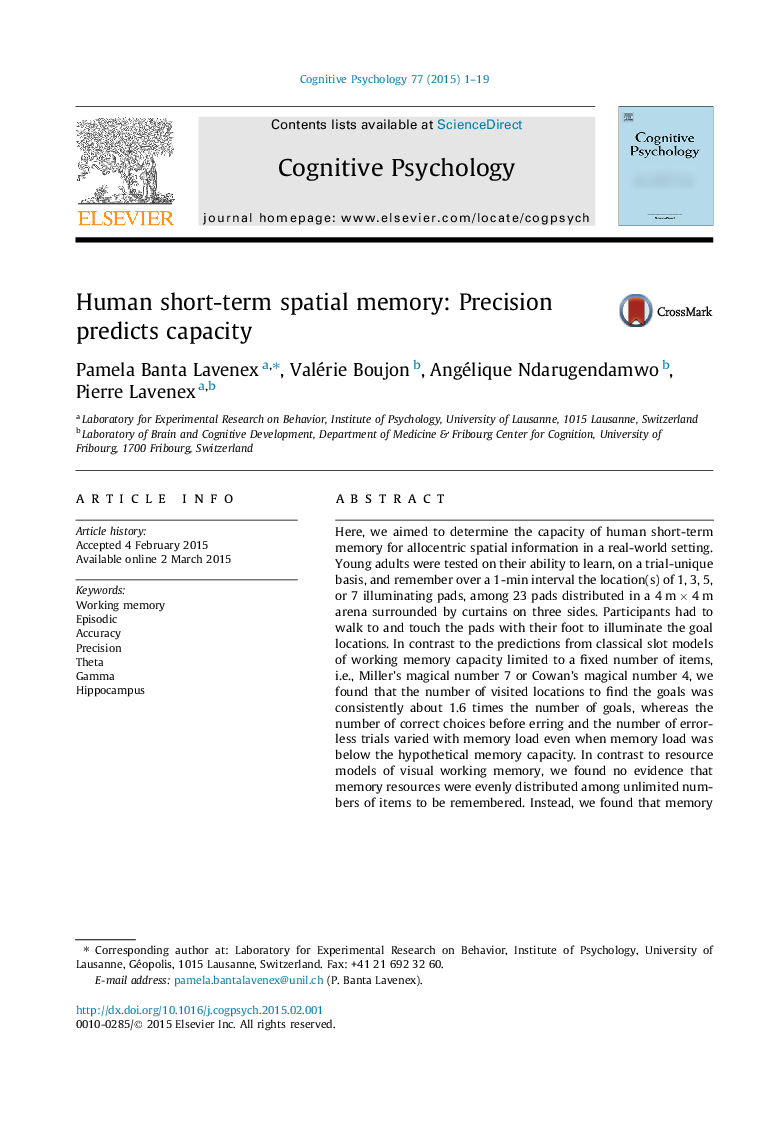| Article ID | Journal | Published Year | Pages | File Type |
|---|---|---|---|---|
| 916841 | Cognitive Psychology | 2015 | 19 Pages |
•Slot models of WM do not predict short-term allocentric spatial memory capacity.•Shared-resource models do not predict short-term allocentric spatial memory capacity.•Memory performance for one location predicts performance for multiple locations.•Memory precision determines short-term allocentric spatial memory capacity.
Here, we aimed to determine the capacity of human short-term memory for allocentric spatial information in a real-world setting. Young adults were tested on their ability to learn, on a trial-unique basis, and remember over a 1-min interval the location(s) of 1, 3, 5, or 7 illuminating pads, among 23 pads distributed in a 4 m × 4 m arena surrounded by curtains on three sides. Participants had to walk to and touch the pads with their foot to illuminate the goal locations. In contrast to the predictions from classical slot models of working memory capacity limited to a fixed number of items, i.e., Miller’s magical number 7 or Cowan’s magical number 4, we found that the number of visited locations to find the goals was consistently about 1.6 times the number of goals, whereas the number of correct choices before erring and the number of errorless trials varied with memory load even when memory load was below the hypothetical memory capacity. In contrast to resource models of visual working memory, we found no evidence that memory resources were evenly distributed among unlimited numbers of items to be remembered. Instead, we found that memory for even one individual location was imprecise, and that memory performance for one location could be used to predict memory performance for multiple locations. Our findings are consistent with a theoretical model suggesting that the precision of the memory for individual locations might determine the capacity of human short-term memory for spatial information.
